Abstract
The prevention of common diseases relies on identifying risk factors and implementing intervention in high-risk groups. Nevertheless, most known risk factors have low positive predictive value (PPV) and low population-attributable fraction (PAF) for diseases (e.g., cholesterol and coronary heart disease). With advancing genetic technology, it will be possible to refine the risk-factor approach to target intervention to individuals with risk factors who also carry disease-susceptibility allele(s). We provide an epidemiological approach to assess the impact of genetic testing on the PPV and PAF associated with risk factors. Under plausible models of interaction between a risk factor and a genotype, we derive values of PPV and PAF associated with the joint effects of a risk factor and a genotype. The use of genetic testing can markedly increase the PPV of a risk factor. PPV increases with increasing genotype-risk factor interaction and increasing marginal relative risk associated with the factor, but it is inversely proportional to the prevalences of the genotype and the factor. For example, for a disease with lifetime risk of 1%, if all the risk-factor effect is confined to individuals with a susceptible genotype, a risk factor with 10% prevalence and disease relative risk of 2 in the population will have a disease PPV of 1.8%, but it will have a PPV of 91.8% among persons with a genotype of 1% prevalence. On the other hand, genetic testing and restriction of preventive measures to those susceptible may decrease the PAF of the risk factor, especially at low prevalences of the risk factor and genotype.(ABSTRACT TRUNCATED AT 250 WORDS)
Full text
PDF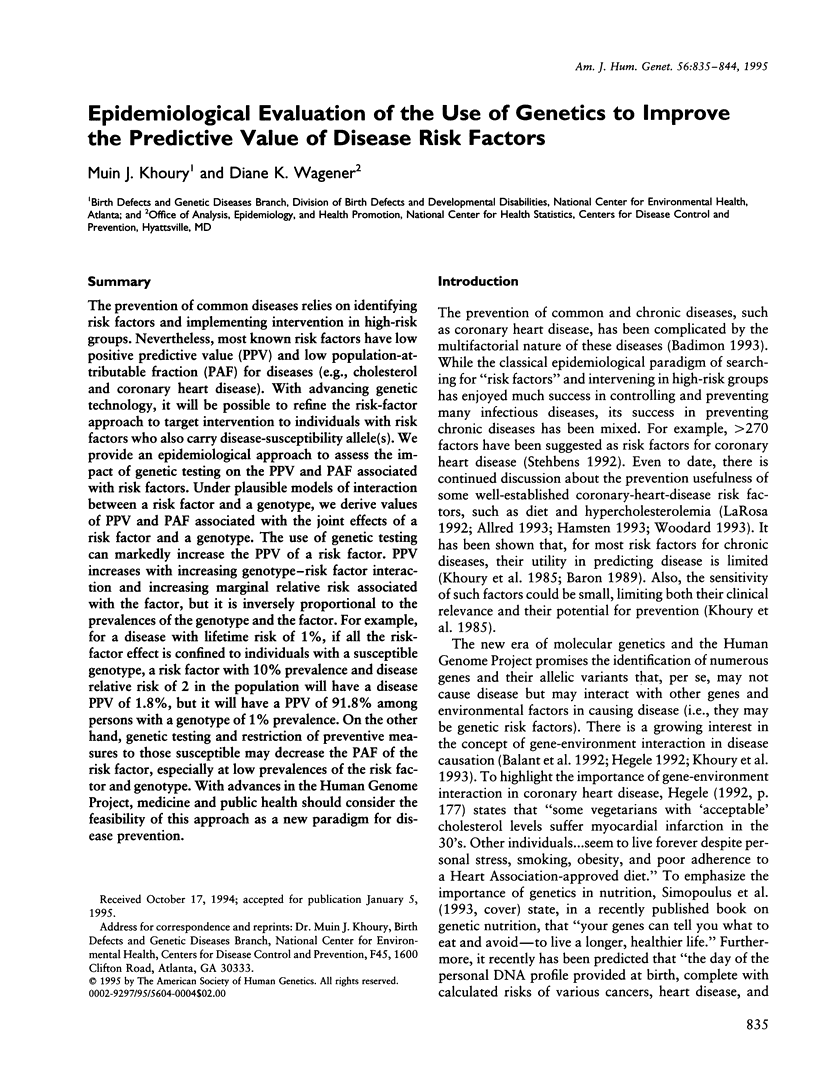
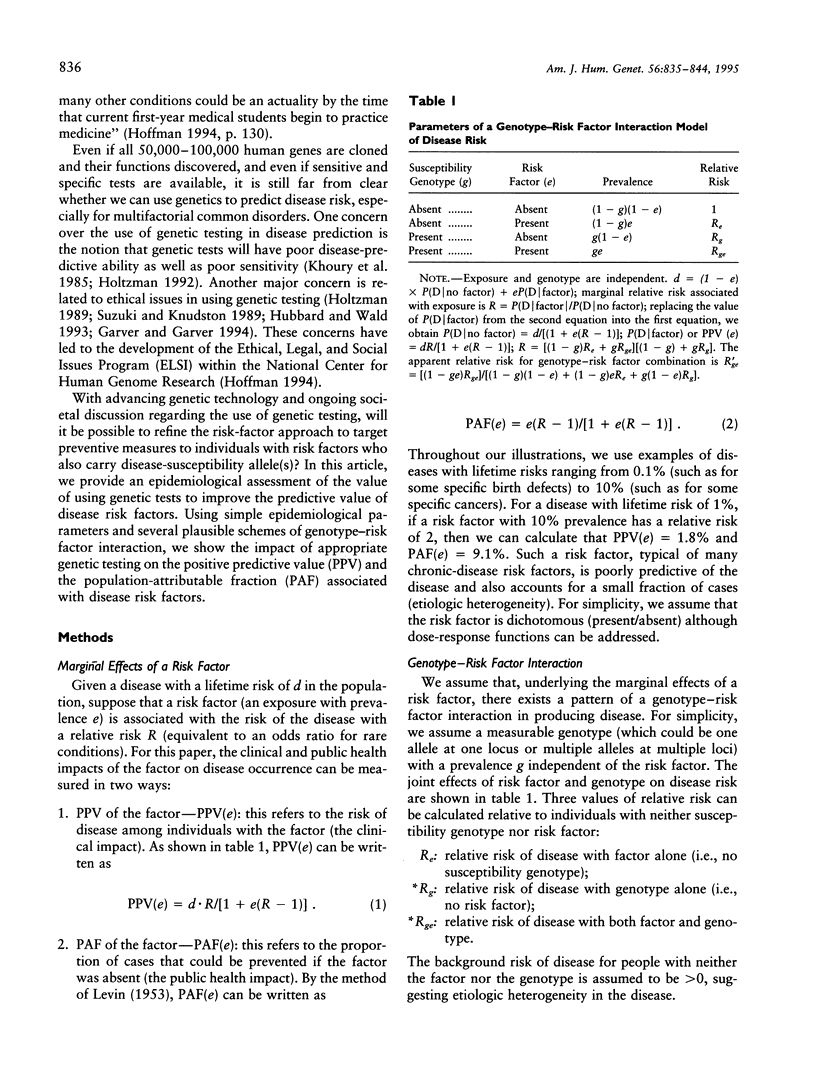
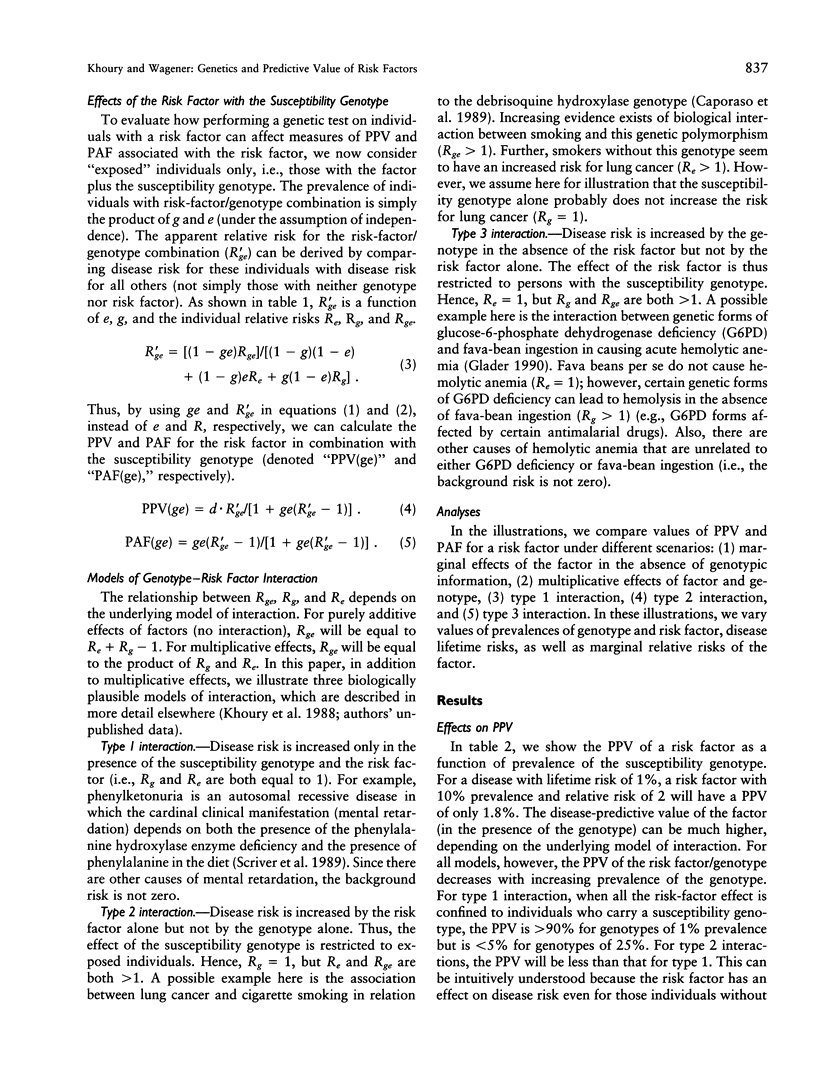
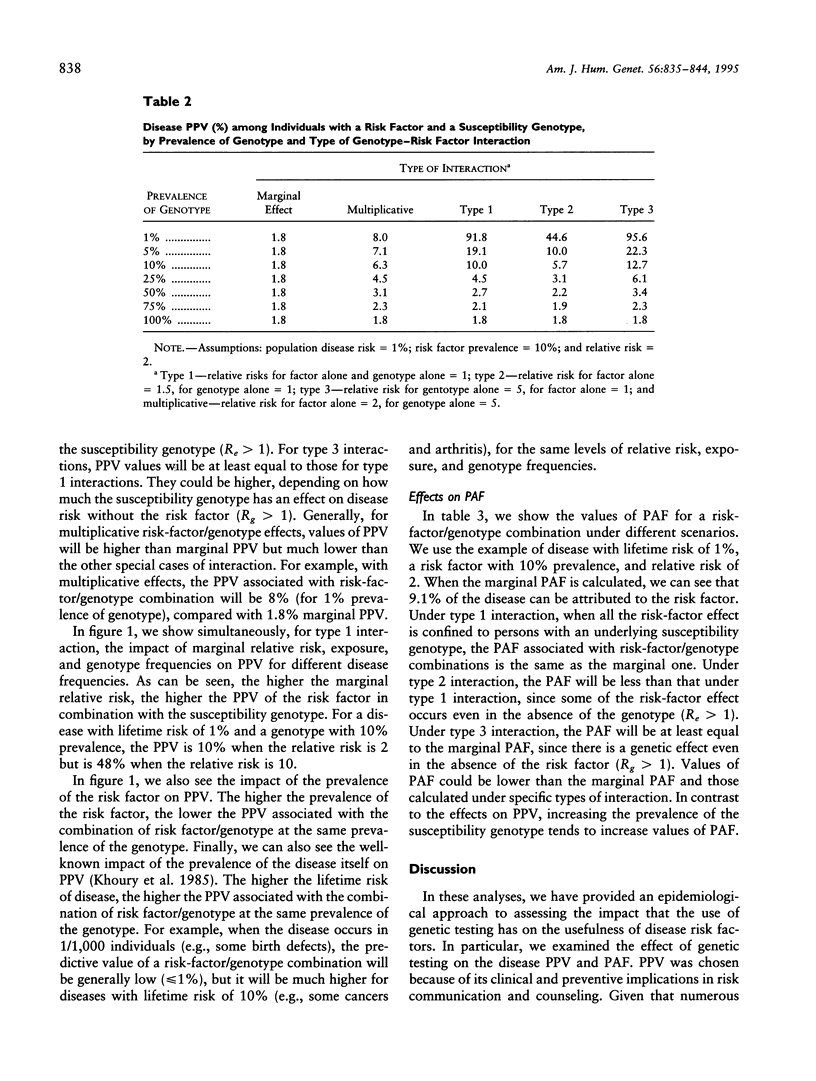
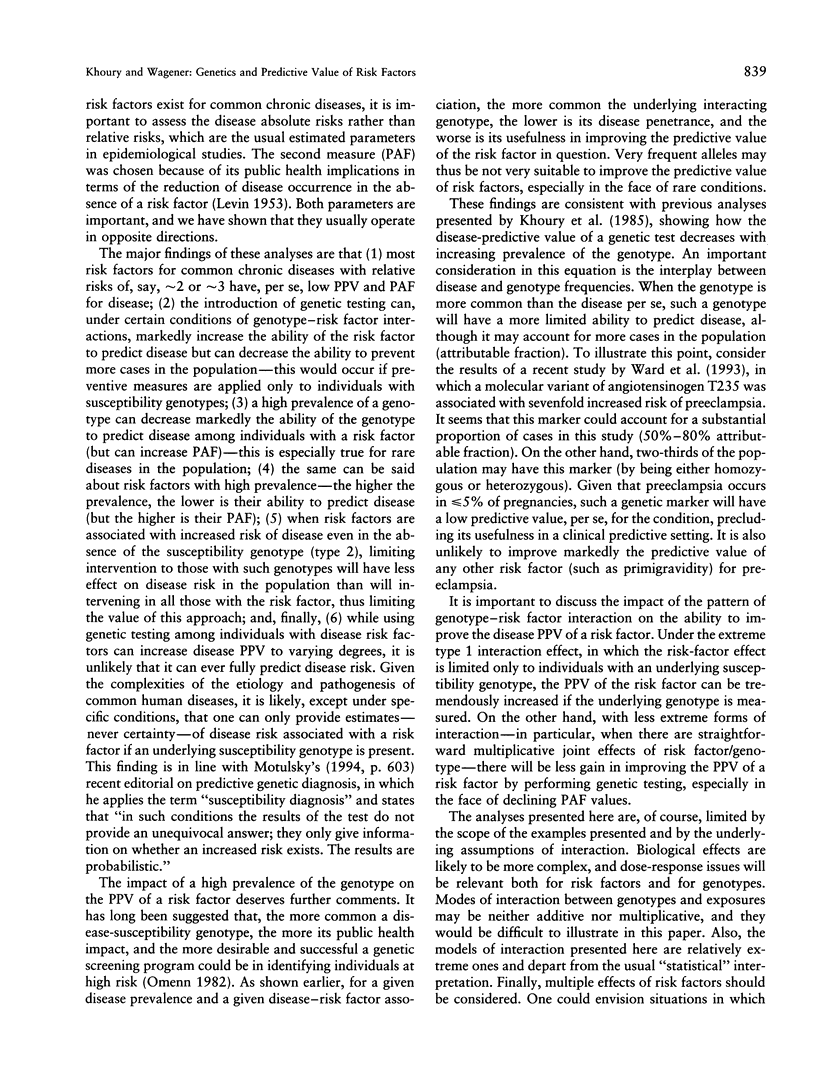
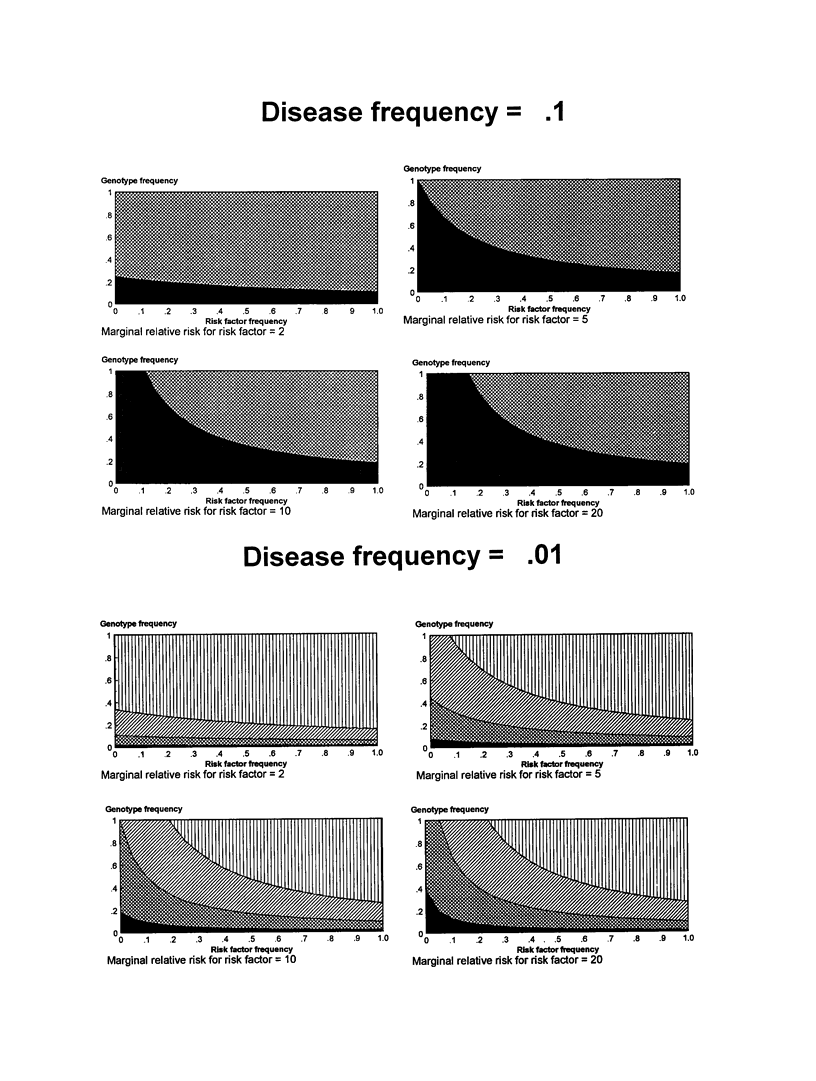
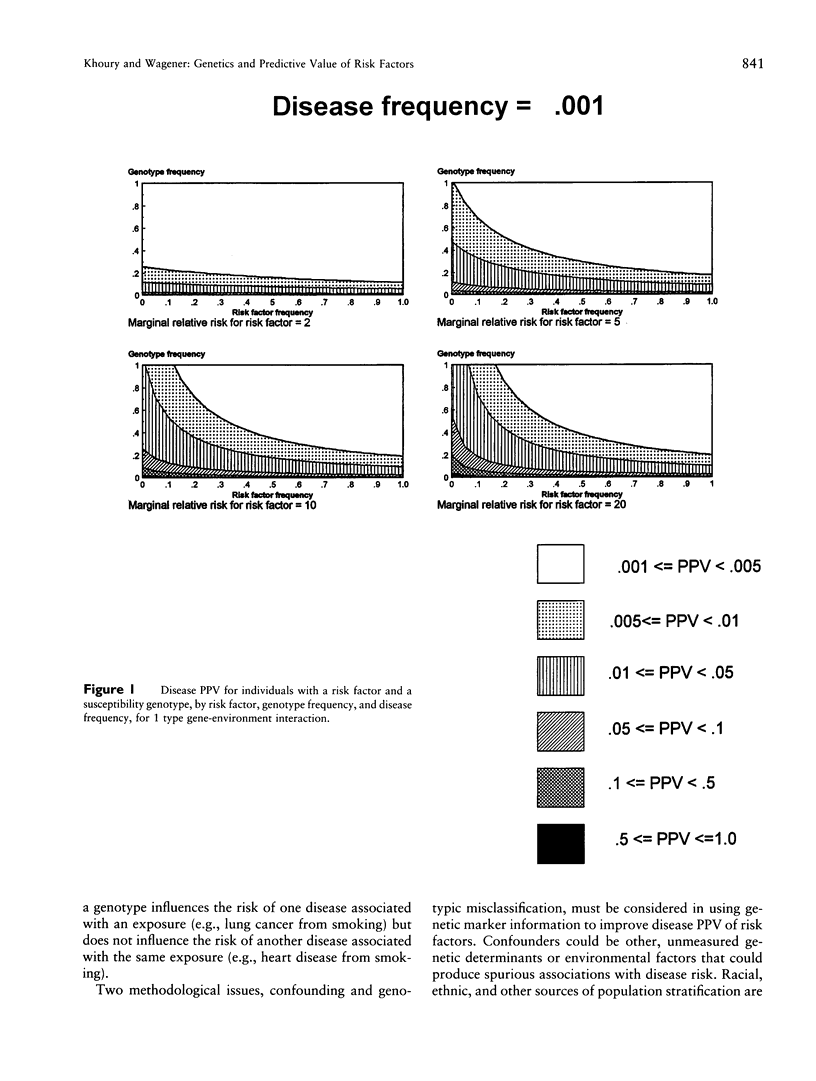
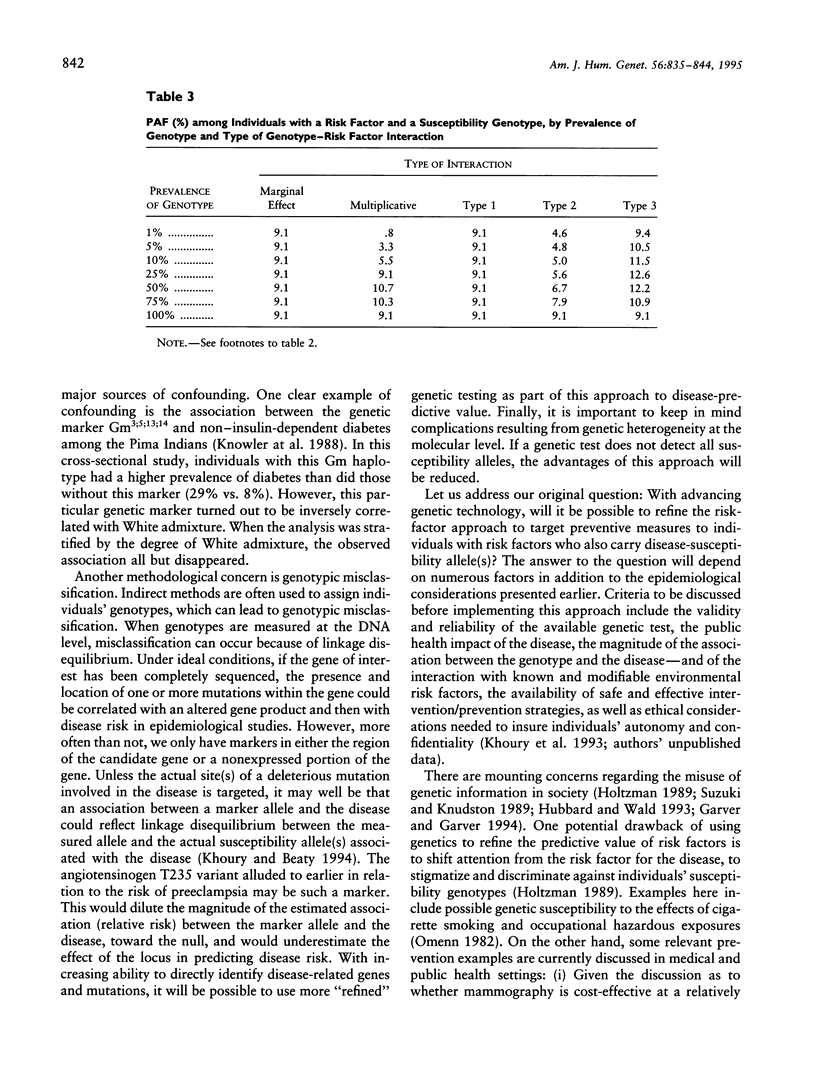
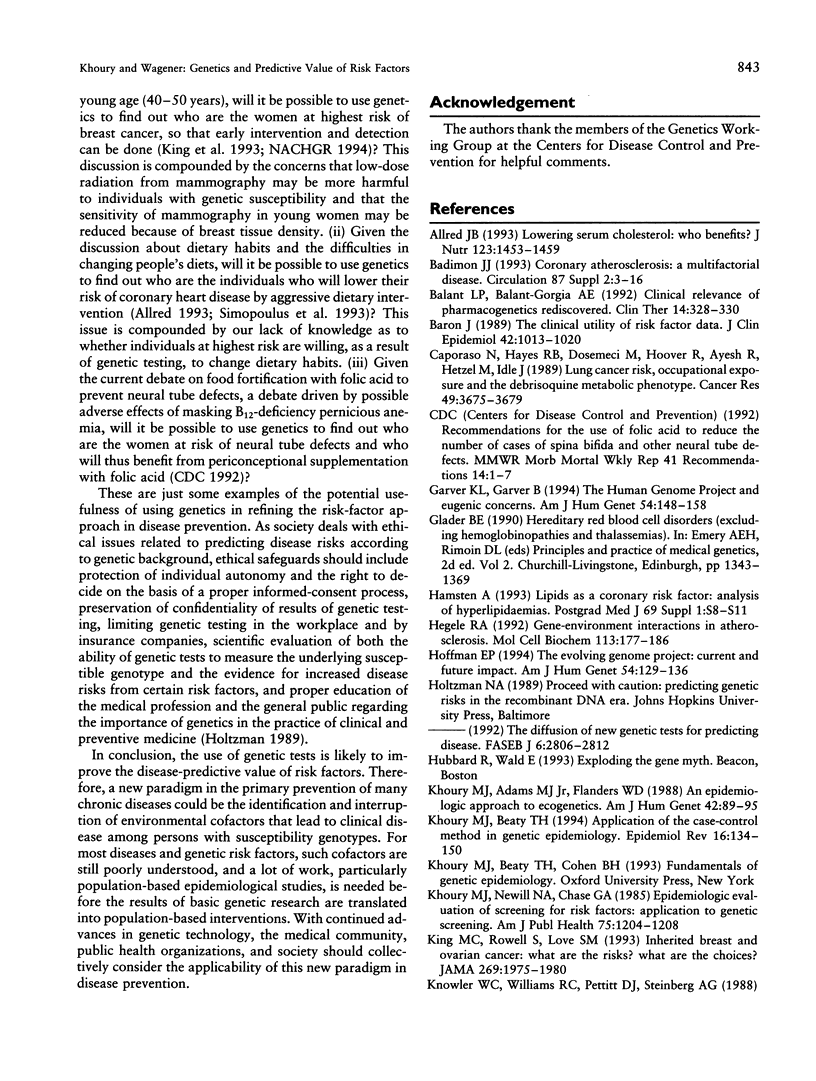
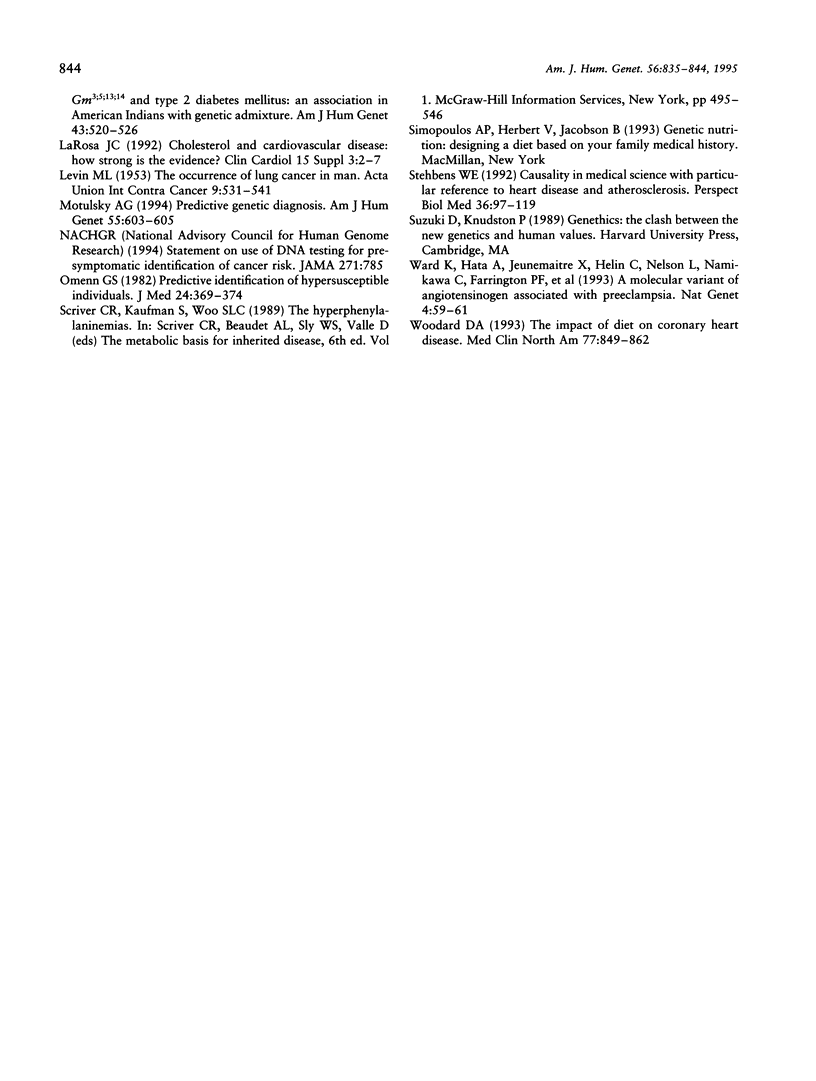
Selected References
These references are in PubMed. This may not be the complete list of references from this article.
- Allred J. B. Lowering serum cholesterol: who benefits? J Nutr. 1993 Aug;123(8):1453–1459. doi: 10.1093/jn/123.8.1453. [DOI] [PubMed] [Google Scholar]
- Balant L. P., Balant-Gorgia A. E. Milestones in clinical pharmacology. Clinical relevance of pharmacogenetics rediscovered. Clin Ther. 1992 Mar-Apr;14(2):328–327. [PubMed] [Google Scholar]
- Baron J. A. The clinical utility of risk factor data. J Clin Epidemiol. 1989;42(10):1013–1020. doi: 10.1016/0895-4356(89)90167-4. [DOI] [PubMed] [Google Scholar]
- Caporaso N., Hayes R. B., Dosemeci M., Hoover R., Ayesh R., Hetzel M., Idle J. Lung cancer risk, occupational exposure, and the debrisoquine metabolic phenotype. Cancer Res. 1989 Jul 1;49(13):3675–3679. [PubMed] [Google Scholar]
- Garver K. L., Garver B. The Human Genome Project and eugenic concerns. Am J Hum Genet. 1994 Jan;54(1):148–158. [PMC free article] [PubMed] [Google Scholar]
- Hegele R. A. Gene-environment interactions in atherosclerosis. Mol Cell Biochem. 1992 Aug 18;113(2):177–186. doi: 10.1007/BF00231537. [DOI] [PubMed] [Google Scholar]
- Hoffman E. P. The Evolving Genome Project: current and future impact. Am J Hum Genet. 1994 Jan;54(1):129–136. [PMC free article] [PubMed] [Google Scholar]
- Holtzman N. A. The diffusion of new genetic tests for predicting disease. FASEB J. 1992 Jul;6(10):2806–2812. doi: 10.1096/fasebj.6.10.1634043. [DOI] [PubMed] [Google Scholar]
- Khoury M. J., Adams M. J., Jr, Flanders W. D. An epidemiologic approach to ecogenetics. Am J Hum Genet. 1988 Jan;42(1):89–95. [PMC free article] [PubMed] [Google Scholar]
- Khoury M. J., Beaty T. H. Applications of the case-control method in genetic epidemiology. Epidemiol Rev. 1994;16(1):134–150. doi: 10.1093/oxfordjournals.epirev.a036139. [DOI] [PubMed] [Google Scholar]
- King M. C., Rowell S., Love S. M. Inherited breast and ovarian cancer. What are the risks? What are the choices? JAMA. 1993 Apr 21;269(15):1975–1980. [PubMed] [Google Scholar]
- Knowler W. C., Williams R. C., Pettitt D. J., Steinberg A. G. Gm3;5,13,14 and type 2 diabetes mellitus: an association in American Indians with genetic admixture. Am J Hum Genet. 1988 Oct;43(4):520–526. [PMC free article] [PubMed] [Google Scholar]
- LEVIN M. L. The occurrence of lung cancer in man. Acta Unio Int Contra Cancrum. 1953;9(3):531–541. [PubMed] [Google Scholar]
- Motulsky A. G. Predictive genetic diagnosis. Am J Hum Genet. 1994 Oct;55(4):603–605. [PMC free article] [PubMed] [Google Scholar]
- Omenn G. S. Predictive identification of hypersusceptible individuals. J Occup Med. 1982 May;24(5):369–374. doi: 10.1097/00043764-198205000-00007. [DOI] [PubMed] [Google Scholar]
- Woodard D. A., Limacher M. C. The impact of diet on coronary heart disease. Med Clin North Am. 1993 Jul;77(4):849–862. doi: 10.1016/s0025-7125(16)30228-0. [DOI] [PubMed] [Google Scholar]


